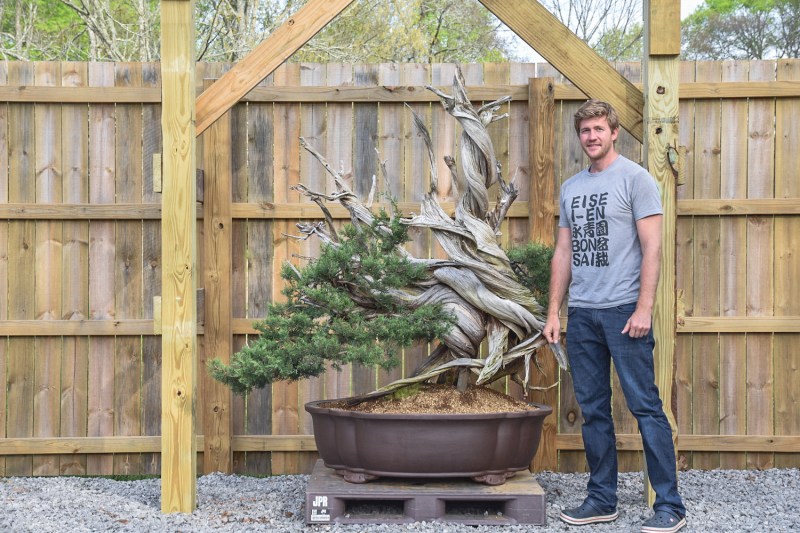
Bjorn Bjorholm, 34, Zooms in from his home near Nashville, Tenn. It’s February, deep winter, and his skin seems pale surrounded by the bare white walls. Outside, an unusual cold snap has shut down the city, and his Eisei-en bonsai nursery lies under a thick blanket of snow. “Dreary’ would be the best word,” he says to describe the space. “Which is always the case in the winter.”
Bjorholm, originally from Knoxville, Tenn., explains the name of his dormant business: “Evergreen garden,” roughly translated from the Japanese; one that is always in bloom. “But it has a couple of deeper meanings as well,” he continues. “Forever young,” or having an open mind, ready to learn. “And it can also translate to ‘always green,’ as in always making money,” he says, laughing. “My wife came up with it.”
Related Guides
Called the “Brad Pitt of Bonsai,” the six-foot-six Bjorholm is house-of-mirrors when juxtaposed with his chosen craft. With the muscular build of a tight end, in fairer weather he towers over the miniature trees he bends, tears, and snips. He was even more conspicuous during his nine years living in Kyoto, Japan, after college, most of which was spent in the seven-days-a-week, sun-up to sun-down routine of bonsai apprenticeship. He was an anomaly, “a novelty,” he says of his time learning under the elder Keiichi Fujikawa. Despite the master’s initial reluctance to take on an apprentice, let alone a foreigner, Bjorholm came to be treated as a son as well as a kind of local celebrity. Forty-year customers, dropping their trees off at the nursery for annual maintenance, would request his hand rather than the owner’s. “I like to think it was because I was good,” he says, “but I think it was because they wanted to brag to their friends that a Westerner had styled their tree.”
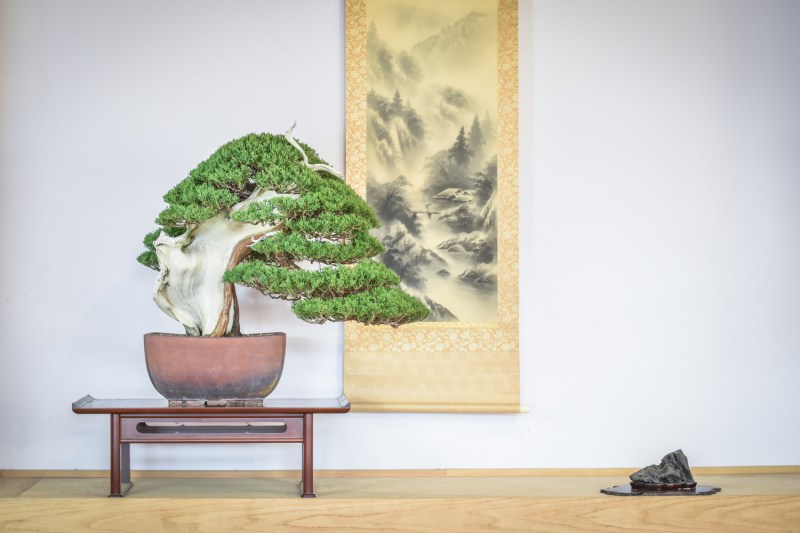
But as enamored as he was with the Japanese culture, leading to the decision to expatriate, the tall American quickly left behind his tourist mindset and became one with the land itself. (After all, after a decade very little still feels foreign.) One of his greatest lessons: Patience, a virtue he believes most North Americans don’t understand. “Say, for example, you’re taking a large branch off of a tree,” he says. “You want that wound to heal over in four, five, six years, so in 20 years, it’s imperceptible on the trunk of the tree. So you have to know the right technique and apply that now to be able to get to that result 20 years from now. All of those are things that I think much more deeply about of my apprenticeship in Japan.”
Contrary to the understanding of many in America, bonsai is not a species of tree but a style of cultivation, in which specific trees, selected by the merits of their curvature, leaf size, and adaptability, are established in small pots and trained to grow in certain curves and planes. In a field, they might reach 40 feet or more, but through precise pruning, training wires, and shallow dishes, they live their hundreds of years out in miniature. Another detail that runs contrary to popular belief: While training bonsai may be gradual, for young trees it’s often violent, with limbs lopped off and taproots sheared. Any course of action, fast or slow, is achieved through decisiveness with an eye to the future. Cuts are made to focus the flourishing. “It totally changed my perspective on work, on life, on thinking about the future, on culture, on everything,” Bjorholm says.
In Japan, bonsai, like sumo and sushi, is a subculture unto itself that far exceeds the shallow knowledge in the U.S. The big bonsai shows in Tokyo and elsewhere in the country draw tens of thousands of attendees every year, and trees are national epitomes, with spreads in glossy magazines and likenesses stitched onto handkerchiefs. “There are 50 to 60 trees in Japan that everybody knows. And out of those 50 or 60 trees, there are probably four or five that will forever be considered the best bonsai in the history of the world,” he says. “So, yeah, getting to see those in person was crazy.”
Bjorholm sounds like an American when he talks of the awe he felt walking those exhibition halls, head-and-shoulders taller than the native populace and speechless both from from his poor Japanese and the effects of being star-struck. But his actions were anything but stereotypically American during the long hours of a six-year apprenticeship, which might include repotting hundreds of trees and then driving across town to help Fujikawa-sensei’s parents pull vegetables from their garden. Under his teacher’s direction, he grew, and after he graduated from the program, he remained to work at the same nursery while traveling within the country. He and his wife, a Chinese national whom he met during a senior-year study-abroad program, considered remaining in Japan, but immigration restrictions meant that it would be another decade before they might set up their own nursery. Long term, it was a poor future, and so Bjorholm made a decision, returning to the States in 2017 and moving to Nashville, where he believed he’d find the the most fertile ground to grow his own business.
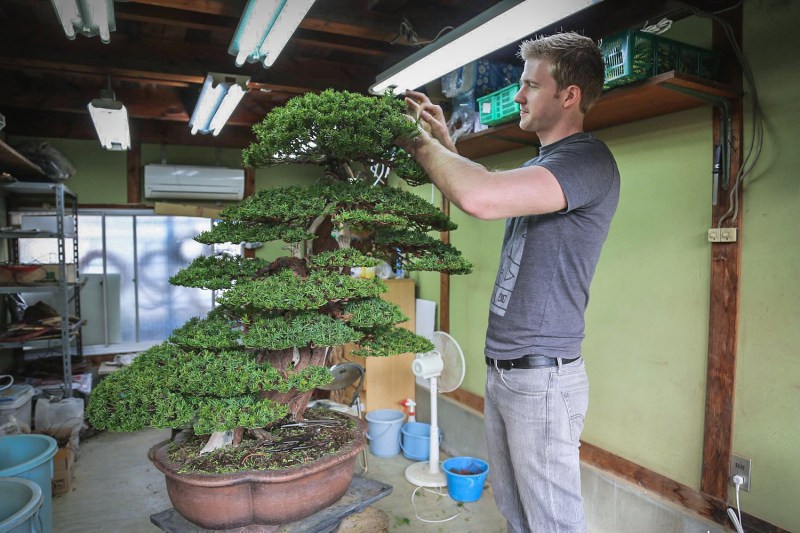
Bonsai has been in the United States for decades, though it was largely a Japanophile hobby. Bonsai techniques were passed from first-gen Japanese immigrants to other Americans, who then passed them to youth like Bjorholm. In that generational transfer, Asian trees had become orthodoxy. “It was all about the Japanese species,” he remembers. “It never felt as cool to work with the native stuff until I came back form Japan and realized just how good base material is here.”
While he had experimented with American flora as a high schooler — after all, it’s cheaper to dig up a tree in a field than it is to buy a seedling from a garden center — red cedars and Virginia pines didn’t hold the mystery of a Japanese maple. But after nearly a decade in Japan, with mystery replaced by practicality, Bjornholm began to soberly evaluate New World wood, and what he found was promising.
“When [the Japanese] see our native material here, they are very jealous,” he says, explaining that in Japan, the Seventies-era over-harvesting of wild trees adapted to bonsai, or yamadori, led to wilderness scarcity, and since then collection has been outlawed. Concurrently, a growing and affluent Chinese market has been purchasing heritage trees, a second deforestation. “Whatever is in Japan as a bonsai is all they’ve got,” he says, “so there are fewer and fewer good trees in Japan. Here, there’s almost an endless supply.”
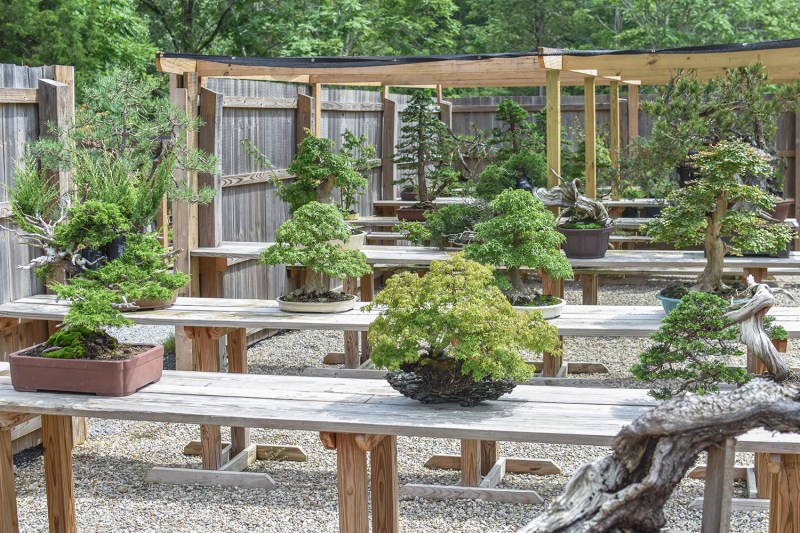
Bjorholm has become not only a pioneer and advocate for North American species adapted to bonsai but also acts a lead educator in the United States. Through his YouTube channel, which he films and edits himself, he’s already accumulated more than 150,000 followers, which is no small feat for what many see as a niche hobby. To subscribers, part of the attraction is his natural magnetism; minimalist, clean sets; and clear instruction. But much can also be credited to the influx of seekers to bonsai in 2020, during which any socially distanced activity that state governments didn’t restrict, from houseplants to bicycles, saw unprecedented demand.
“Right now in the States bonsai is booming,” he says. “Plus, the opportunity to work with native material and do unique and interesting things that haven’t been done before, all of that was splayed out before us.”
The late-winter season, which he calls “the calm before the storm,” offers a brief respite. His workshop and cold-frame are packed thick with trees stacked on every surface to protect them from single-digit temperatures, which are extreme for even the hardy trees, and the outdoor benches upon which they’re usually displayed are buried under six inches of ice and snow.
But the spring is coming.
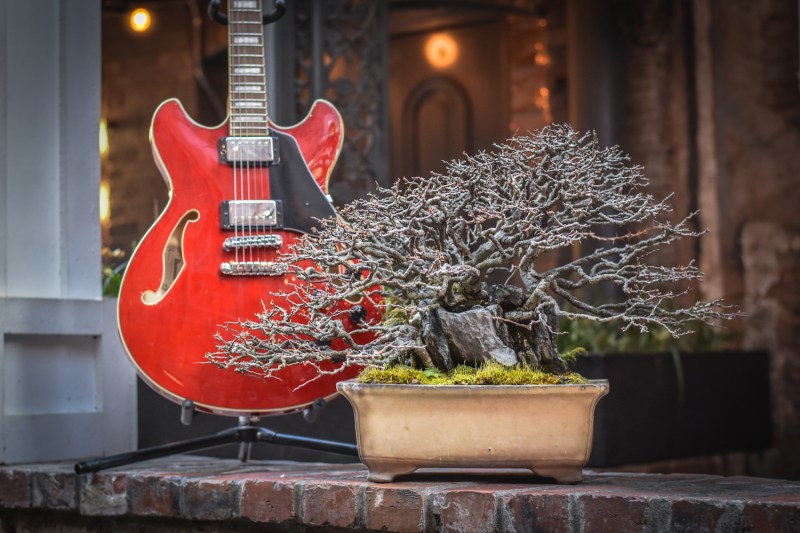
With temperatures forecasted to rise into the 60s in the coming week, Bjorholm can already see into the future. In the next few days, this snow-covered space will melt down to the bare wood shelves, and he’ll slowly move the trees out and into the sun. By March, bare brown and gray limbs will swell with green buds before the reds of the freshly-foliaged deciduous trees, the chartreuse nibs of juniper boughs, and the pale blossoms of cherry will dot the space. Clients will drive in, dropping off their over-wintered trees for annual maintenance, pruning new growth and re-wiring branches and trunks. And in late April, his wife will give birth to their first child, a girl.
We talk a little more of the wild North American species he collects to introduce to a new culture. The agents with whom he works in Colorado rove the backcountry looking for just the right trees to carefully remove and transport back to Eisei-en and a new home in the South.
“These plants, in their natural environment, they’re surviving. This is why they look all twisted and gnarled,” Bjorholm, owner of the evergreen garden, says. “Our goal is to make them thrive.”
Editors' Recommendations
- Why This Olympic Gold Medalist Shot Putter Is Still Approaching His Peak
- This Texan Bead Sculpture Artist Turns Animal Skulls Into Modern Western Art



